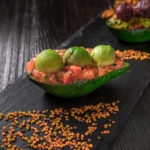Williams Sonoma, An Empire Created from a Dream
Williams Sonoma.
My version of a toy store.
A place I could easily spend hours in (and have).
A shop where you can find every possible thing you’d need from the most basic of basics, like the perfect chef’s knife, to the latest, fun new gadget, like a spiralizer tool.
I suppose I never really thought about how this mecca to the home cook got started; I just remember pouring myself into the catalogs that would arrive at home when I was a child. From the burnt umber Le Creuset Dutch Ovens to the shiny All-Clad pots and pans to the crisp white signature linens, I wanted all of it!
When other kids were paging though the Sears Toy Catalog Wishbook for Barbies (ok, I did a little of that, too), I was daydreaming about how I wanted my kitchen to be kitted out when I grew up.
When I learned of the passing of the founder, Chuck Williams (at age 100) over the weekend, I was intrigued to learn more about the beginnings of my favorite store, as well as the person who created all of it.
In 1953, after four years overseas as an airplane mechanic for Lockheed International, in WWII, Chuck Williams moved to Sonoma, CA, where he bought the Ralph Morse Hardware Store and over the next few years, he gradually converted its stock from hardware to French cookware, filling a niche in the market as European cookware was difficult to find for purchase in America at the time.
In 1958, he moved to San Francisco and more than a decade later, in 1971, Williams-Sonoma introduced its first cookware catalog, which was distributed to a mailing list of 5,000.
Williams also operated a test kitchen at Williams-Sonoma corporate headquarters in San Francisco, where recipes are tested for the company’s catalogs and cookbooks. He was an editor or contributor to nearly every cookbook that Williams-Sonoma releases and in total, he was involved with the production of more than 100 cookbooks[1].
The small mom and pop shop that became Williams-Sonoma, a retail, home furnishings and mail-order giant, with more than 600 stores under its corporate umbrella and $4.7 billion in net revenue, transformed many kitchens into “gleaming, efficient refectories hung with copper pots and stashed with pleated soufflé molds, garlic presses and carbon steel knives, and made it possible for ordinary cooks to get serious, and serious cooks to put epicurean repasts on the table”[2].
Its early supporters were quite notable as well; in the early 1960s, Julia Child’s cookbooks and television shows helped business; she became a friend. So did James Beard, the dean of cooking in America, who helped spread the word. A regular customer who wrote copy for an advertising agency suggested a mail-order catalog, and in 1971 the first went out to a mailing list of 5,000.
In 2004, he told the New York Times[3], “Right from the beginning, I always bought what I liked. I looked for quality and design, and I had reasonably good taste. Basically, I think I was right.”
In the same article, we’re made privy to the type of person he was: “ever the perfectionist, Mr. Williams did much of the work at the store himself, sweeping the sidewalks and spending each Sunday cleaning the shelves. Not to mention honing his own brand of customer service; when a woman throwing a dinner party called in a panic because she didn’t have a cake mold, he got on a bus and took one to her”.
Reminded me of the reference to indefatigable nature of Julia Child, when she’d personally answer countless phone calls on Thanksgiving Day in an attempt to be the sole resource for panic home cooks, frightened that they’d ruin the year’s most important meal[4].
Mr. Williams started with a simple idea to fill a void in a market he was passionate about. He followed his heart and success followed.
We’ve all heard the advice to follow our dreams, to let our heart lead us, rather than our over-thinking heads.
This story is just one such example, and what a legacy he’ll leave behind!
[1] Wikipedia. Wikimedia Foundation, n.d. Web. 06 Dec. 2015
[2] McFadden, Robert. “Chuck Williams, Founder of Williams-Sonoma, Dies at 100.” The New York Times. The New York Times, 05 Dec. 2015. Web. 06 Dec. 2015
[3] Witchel, Alex. “He Changed The Way America Cooks.” The New York Times. The New York Times, 10 Feb. 2004. Web. 06 Dec. 2015
[4] Moskin, Julia. “Thanksgiving, the Julia Child Way.” The New York Times. The New York Times, 17 Nov. 2015. Web. 06 Dec. 2015





